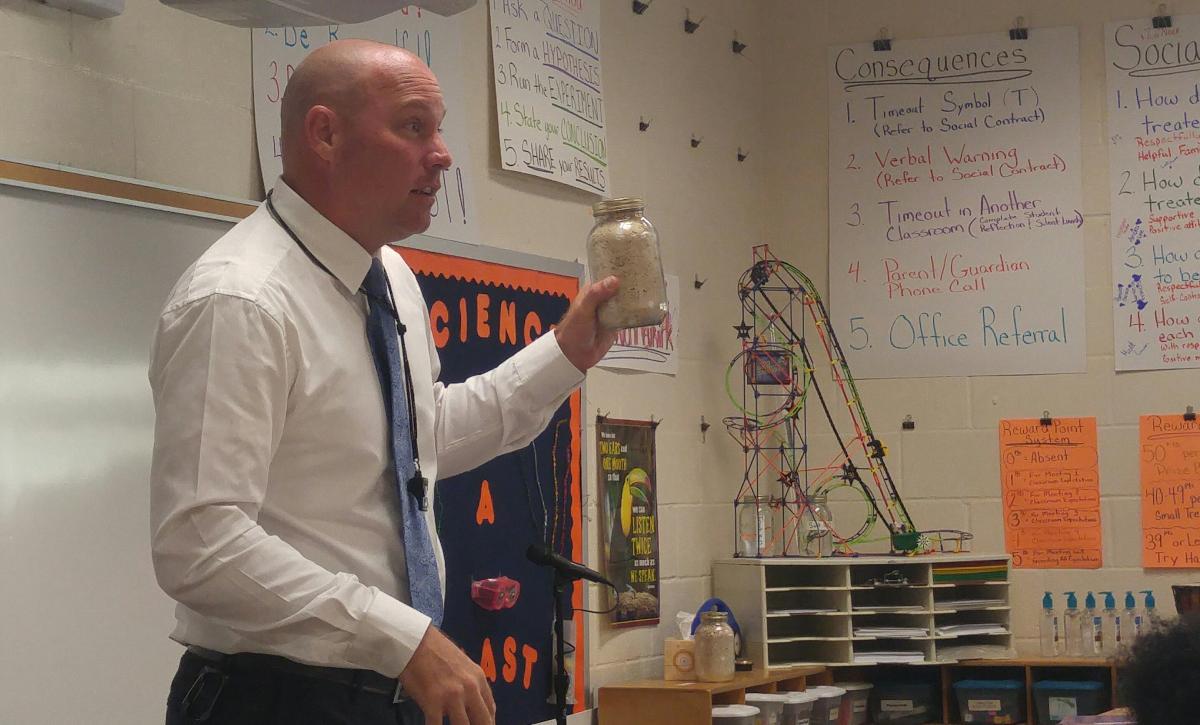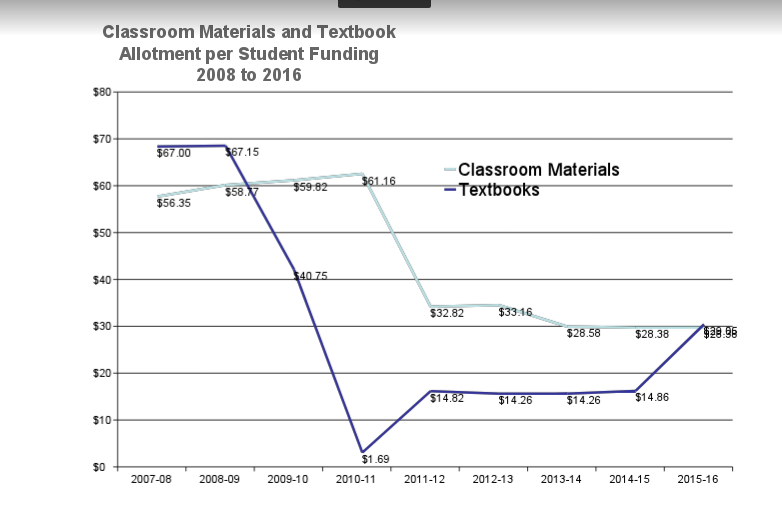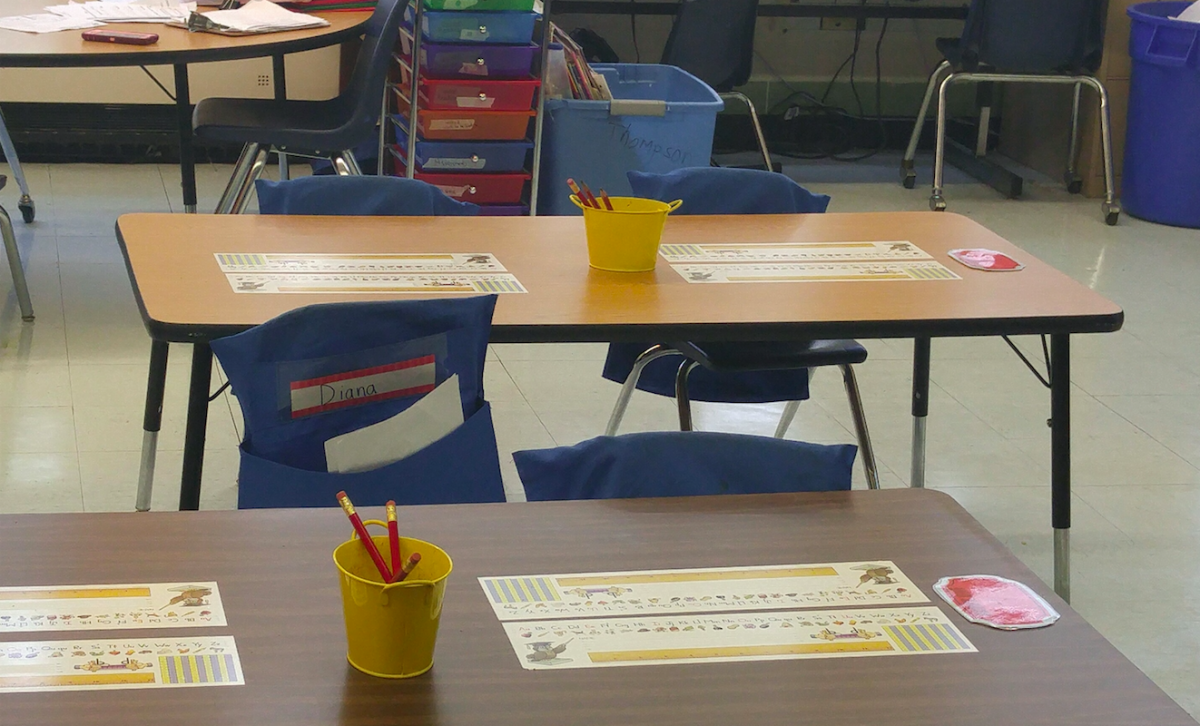Inside a fifth grade class at Wiley Elementary in Greensboro, Scott Van Newkirk is leading a lightning round of questions about a science lesson his students are working on. It's a fast paced game – and a creative one. Van Newkirk says he's always looking for new ways to connect his students to the curriculum.

One way he's also doing that is he's increasingly turning to digital materials to modernize his lessons. The reason, he says, is that the books don't match mandated education standards, also known as Common Core. It's a problem shared by many school districts throughout North Carolina.
“Textbooks are a good thing because what they do is level the playing field. Every student has the same text,” says Van Newkirk. “So there's a positive side of having texts where everybody's kind of on that level playing field, but then you also have to tailor make it to the student because what works for an affluent student doesn't necessarily work for a student in poverty.”
Van Newkirk, like many other educators, has to piece together his learning materials to meet students' needs. All this as funding for textbooks plunged during the recession. In 2009, textbook funding per student was around $67. The following year, it was under $2.
The money has increased over time but is still not at pre-recession levels. The latest information available shows that for the 2016-2017 school year, textbook funding per student was around $41.

“Not only do we have to get out of the recession hole and the lack of funding that we received during that time to get even, we also have to be able to fund the additional students, the 67,000 students and growing that need to be served in the state,” says Alexis Schauss with the state Department of Public Instruction.
And there's no additional pot of money dedicated for transitioning to digital textbooks.
Teachers have to make tough decisions, like choosing between replacing one book out of a set, or investing in software and devices that are often pricy.
Republican lawmaker Jeffrey Elmore represents Wilkes and Alleghany counties. He says the General Assembly is still trying to find out the best way to get schools what they need.
“We are trying to react as good as we can to the changing resources to where we can make sure that kids have the best in front of them through the decision at the local level,” says Elmore. “It's kind of like we're building the plane as it flies. That's one reason why you see so much ebb and flow on this particular issue.”
Plus, right now, many schools aren't even ready for this digital future.
Anna Lankford with Wilkes County Schools flips through an outdated textbook. It has section with a supplemental digital resource. But Lankford says many of the students there can't use it.
“Our district is one of the largest in the state of North Carolina mileage-wise, so it's very hard for all homes to be able to have high speed Internet access,” says Lankford. “If they save something to their desktop or their jump drive, they're able to gain access to the assignment, but many times they go to a local restaurant that has free Wi-Fi or to the library in their community. That causes problems, as well, for students.”

The legislature is trying to figure out how schools use their textbook funding - is it going to digital devices, new textbooks, or somewhere else? They're asking schools to report how the money is used and next year, will restrict them from moving anything at all.
Nora Carr, Chief of Staff for Guilford County Schools, says that's going to tie their hands even more. She says schools are already scrambling to find funding through other sources.
“The sad fact is that we still have some schools that have social studies textbooks that have George Bush as the president of the United States. Now kids notice that. They question it and rightfully so,” says Carr. “I think we can do better as a state and as taxpayers to support these very basic needs that kids have in our classrooms.”
Lawmakers are taking up this issue again when they return to work in the new year. The General Assembly has also created a task force to study per pupil spending in the state, which includes money for textbooks. Recommendations are due by October 2018.
But for many school systems grappling with the issue, that money can't come soon enough.
*Follow WFDD's Keri Brown on Twitter @kerib_news
300x250 Ad
300x250 Ad
